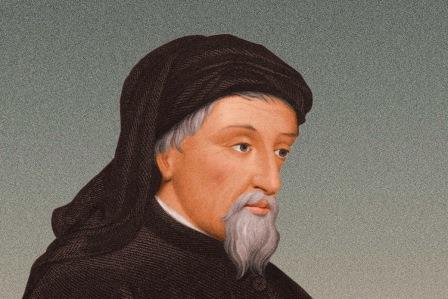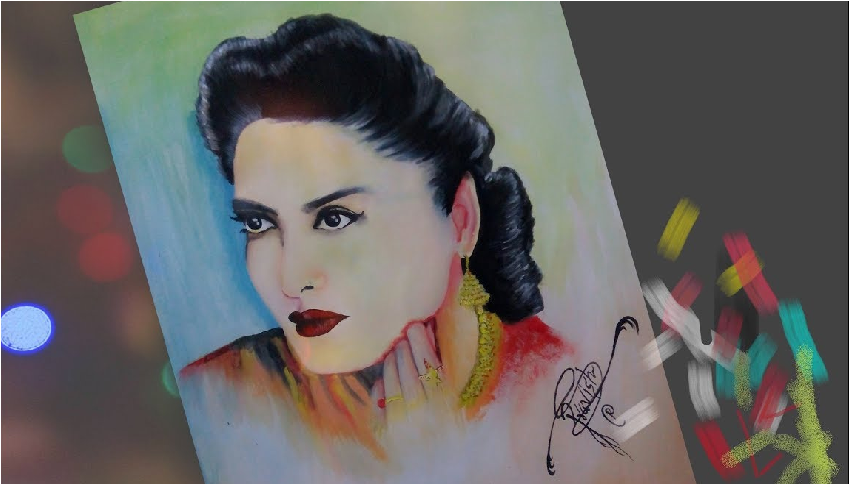These notes can be considered as answers to the following two questions: “Compare and contrast the character of the Knight in The Prologue with that of the Squire.” and “Write a short note on the portraits of the Knight and the Squire in The Prologue to the Canterbury Tales”.
The Prologue to the Canterbury Tales
Prologue to The Canterbury Tales has been called a portrait gallery, and also the first and finest specimen we have in English literature of characters. In The Prologue’ we come across a group of pilgrims, who represent the widest possible section of English medieval society. The Knight and the Squire represent the chivalric classes. It is not the highest class of society, but it is the highest among those who could be expected to go on a group of pilgrimage.
The Knight is an interesting character and grips our attention as he stands at the “entrance” to the gallery. He comes at the very beginning because of his high status in society. It is also appropriate that he begins the list of pilgrims because of his virtuous character. He presents a moral standard against which hone can judge the crudeness and lack of integrity of many in the Knight.
Campaigns in Different Funds
The Knight was a worthy and brave man, having taught well for this king as well as for Christianity. His skill and powers in Battle were well known in several lands, both Christian and heathen. He had naturally traveled widely in the course of his military career. He was respected everywhere for his honorable behavior and had often been given the prestigious position of sitting at the head of the table. Chaucer lends a romantic air to the Knight by giving a list of the places where he had campaigned:
The mention of far-flung cities and countries like Alexandria, Lithuania, Grenada etc., give genes of added adventure, mystery and romance to the Knight’s career as a soldier in the defence of his land and faith. A brave soldier, he had killed many in single combat. He had also won several distinctions.
Multifarious Facets of his Character
Courageous though he was, he was, the Knight lacked the boastfulness and arrogance which is commonly associated with the successful soldier. But then, he was a representative of the chivalric code. Further, he was endowed with several virtues. He was not only brave; he was wise too. Also, he was modest as a maid, says Chaucer emphatically. He had loved chivalry, honor, truth, and courtesy all his life. Also, he had never uttered a tingle rude or unkind word to anyone. He had an unfailing tenderness towards the feeling of others.
And, he was devout besides being a defender of his country and faith. He had vowed to go on the pilgrimage to Canterbury, and, as soon as he could do so had act out to fulfill his vow. Thus, he had not even discarded his battle dress; he had come straight from his campaigns abroad to join the company on the pilgrimage.
Idealized Portrait in the Knight
Chaucer sums up the Knight in words that have now become famous. “He was a verray parfait gentile knight”. The idealization of the Knight is particularly obvious in the statement. What is interesting to note is that Chaucer achieves his idealization through realistic details. On the one hand, the list of campaigns is a realistic touch the other hand; it gives a superlative or ideal effect as well. Through the catalog, Chaucer tries to make us think of the Knight as heroic in stature, as a fighting man than life. (It’s about “The Prologue to the Canterbury Tales”)
Personal Appearance
Almost as an afterthought, Chaucer adds a few details of appearance, dress, and equipage. The Knight, we are told, had good horses. He was dressed in a tunic of coarse “fustian”, which was decidedly the worse for wear. The stained ‘gyp on’ or doublet spoke or the campaigns from which he had made his way directly to join the pilgrimage.
The Knight does not care much for personal appearance “he ne nas nat gay”. In the night, we have an example of Chaucer’s art of characterization. Realistic details are combined with ideal ones. Typical traits intermingle with individualistic ones. The Knight becomes a type, an individual, and a universal, all at once.
Typical and Individual Traits in his Character
He is typical of the chivalric class, brave, wise, just, and generous. At the same time, he is modest as a maid. The trait at once typifies him as an ideal, worthy knight of the Middle Ages, and individualizes him as Chaucer’s Knight. His sober aspect and ills taking along only one servant with him on the pilgrimage mark him as an ideally modest and gentlemanly person. The individual details are given through the description of his stained tunic. He is the very essence of chivalry ever-ready to spring to the defense of the weak, and, hence a universal figure who represents the defender of the oppressed in all times and lands. He, along with the poor Parson and the Ploughman, represents the moral order, which holds society together in the face of the dangers embodied by corruption and tyranny.
Most entertaining character in The Prologue, we enjoy her vitality, robustness, and earthy essence. Black found her a pest sent striking contrast to the Knight in appearance. A young, handsome lad of twenty, lively and brightly dressed. We are given graphic details of his appearance. His hair was curled as if it had been laid in a press. He was of average height and had a well-proportioned body. Also, he was strong and agile. He had given a good account of himself in battle. His records in fighting made him hope to win his lady’s favor. He was a passionate lover who slept a little as did the nightingale. We see the youth of the Squire reflected in his brightly embroidered dress, which had flowers of red and white and looked like a meadow. He was a fresh as the month of May, sums up Chaucer succinctly.
His Accomplishments
The Squire is adept at drawing and writing. He played on the flute or sang in a gay voice all day long. He could write poetry compose songs, dance, and joust. And, he is a well-accomplished young man. He did his duty by his father, the Knight. He carved, or cut the meat at the table, before his father. Thus, he too, like his father is humble, dutiful, and courteous. Chaucer’s Squire is obviously trying to qualify himself for knighthood. (It’s about The Prologue to the Canterbury Tales)
Typical, Individual and Universal Traits in the Squire
Chaucer combines typical, individual, and universal traits in the Squire, as he does in many of the other characters. The Squire represents the youth of all ages in his carefree, gay, and fresh countenance and in his zest for life. At the same time, such as quire must have been a common picture in the England of the fourteenth century. He represents the fashionable young man a lusty lover, well accomplished as well as in battle. And, he also typifies the chivalric code of behavior. He is made an individual in his colorful dress, average height, and curly hair. We notice that some of the details used by Chaucer to describe the Squire are at once typical, individualistic and universal.
The Knight and the Squire: Characters Compared & Contrasted
Chaucer achieved an effective contrast between the first two portraits of “The Prologue”. After the sober and dignified Knight, we come with a perceptible sense of difference to the Squirt. The very verse used to describe the Squire, springs with the uninhabited gaiety and zest of youthful high spirits, while the lines describing the Knight were suitably dignified and sedate. The ‘blood-relationship between the Knight and the Squire provides the base for a dramatic relationship, and at the same time, is the groundwork: for a modestly generalized metaphor of age and youth. Each portrait is enhanced and defined by the presence of the other. The long roll of the knight’s achievements on the battlefield is matched by a short list of the Squire’s prowess. The Squire is as yet too young, and has had so little space.
Further, he was endowed with several virtues. He was not only brave, but he was also wise too. Also, he was modest as a maid, says Chaucer emphatically. He had loved chivalry, honor, truth, and courtesy all cloth. The son reflects his youth in his embroidered gaiety. It is a comparison of the carefree joy of youth, as yet unmarked by experience, with hardened and experienced maturity. The Knight’s modesty and quietness are contrasted in the Squire by an enthusiastic involvement in life. He sings and loves passionately, even though he too, is not boastful or pledges fulfilled and values are woven into the fabric of experience he loved ‘truth’, ‘honor’, ‘freedom’, ‘courtesan’. The Squire is a lover, playing court to his lady.
The father is the representation of the acquired, disciplined, elevated, and enlarged Love, which is piety. In the son, we have the representation of the love channeled into an elaborate social ritual a ‘parody piety’, but still fresh and full of natural impulse. The very springtime at which the pilgrimage takes place is reflected in the Squire the surge of youthful, natural energy is a reflection of the spirit which animates the beginning of The Prologue.
The Squire Following the Footsteps of His Father
The Squire is, however, practicing, to become a worthy knight like his father. He is courteous, lovely, and serviceable. The youth, energy, color, audibleness, and the high spirits of the Squire seem ready to bend to the service of the Knight and to attend on his pilgrimage. There is a suggestion of the present submitting to the sober and respected values communicated by the past, as one critic observes. Beyond the natural submission of a son to his father, is the submission to the supernatural goal, the shrine of St. Thomas to which the pilgrims are bound.




